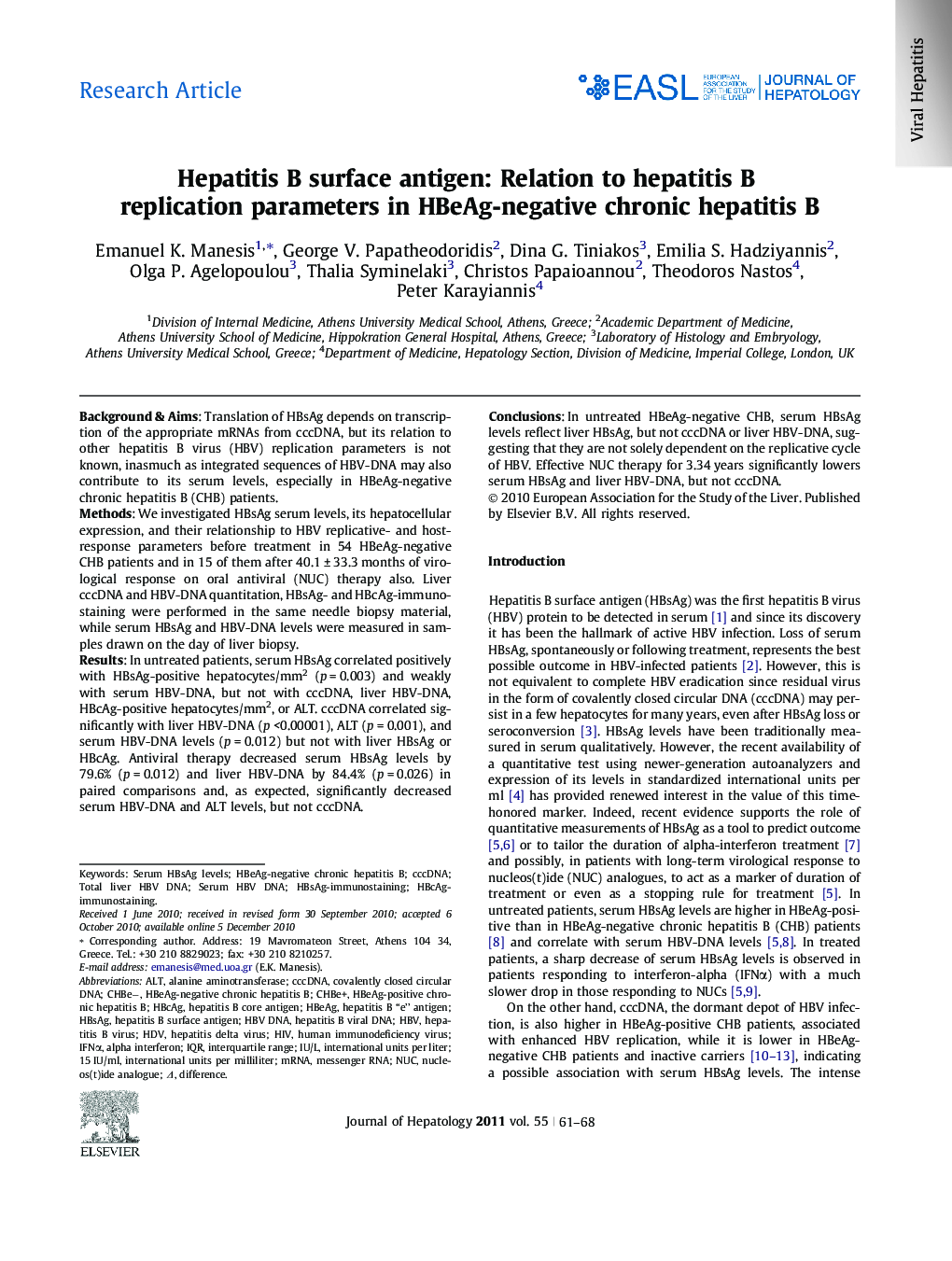| Article ID | Journal | Published Year | Pages | File Type |
|---|---|---|---|---|
| 6108697 | Journal of Hepatology | 2011 | 8 Pages |
Background & AimsTranslation of HBsAg depends on transcription of the appropriate mRNAs from cccDNA, but its relation to other hepatitis B virus (HBV) replication parameters is not known, inasmuch as integrated sequences of HBV-DNA may also contribute to its serum levels, especially in HBeAg-negative chronic hepatitis B (CHB) patients.MethodsWe investigated HBsAg serum levels, its hepatocellular expression, and their relationship to HBV replicative- and host-response parameters before treatment in 54 HBeAg-negative CHB patients and in 15 of them after 40.1 ± 33.3 months of virological response on oral antiviral (NUC) therapy also. Liver cccDNA and HBV-DNA quantitation, HBsAg- and HBcAg-immunostaining were performed in the same needle biopsy material, while serum HBsAg and HBV-DNA levels were measured in samples drawn on the day of liver biopsy.ResultsIn untreated patients, serum HBsAg correlated positively with HBsAg-positive hepatocytes/mm2 (p = 0.003) and weakly with serum HBV-DNA, but not with cccDNA, liver HBV-DNA, HBcAg-positive hepatocytes/mm2, or ALT. cccDNA correlated significantly with liver HBV-DNA (p <0.00001), ALT (p = 0.001), and serum HBV-DNA levels (p = 0.012) but not with liver HBsAg or HBcAg. Antiviral therapy decreased serum HBsAg levels by 79.6% (p = 0.012) and liver HBV-DNA by 84.4% (p = 0.026) in paired comparisons and, as expected, significantly decreased serum HBV-DNA and ALT levels, but not cccDNA.ConclusionsIn untreated HBeAg-negative CHB, serum HBsAg levels reflect liver HBsAg, but not cccDNA or liver HBV-DNA, suggesting that they are not solely dependent on the replicative cycle of HBV. Effective NUC therapy for 3.34 years significantly lowers serum HBsAg and liver HBV-DNA, but not cccDNA.
